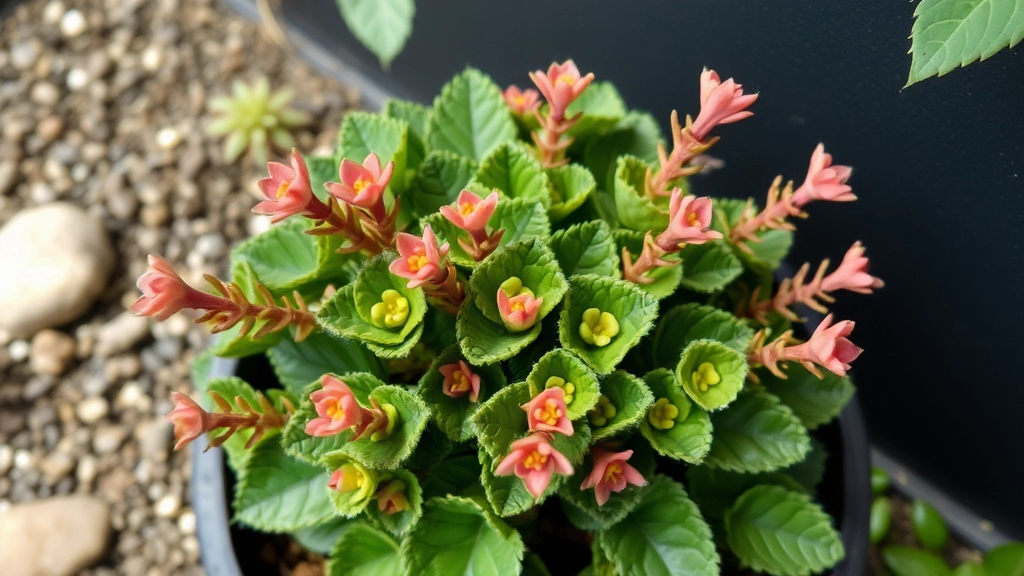Welcome to the fascinating world of Kalanchoe tomentosa nigra care!
As an avid plant enthusiast, I’m thrilled to share my insights on nurturing this unique succulent. From its velvety, chocolate-brown leaves to its low-maintenance nature, this plant is a true gem for both novice and experienced gardeners alike.
In this comprehensive guide
We’ll explore everything from ideal growing conditions and soil requirements to watering techniques and propagation methods. Whether you’re looking to add some dark, fuzzy charm to your indoor garden or simply curious about this exotic Madagascar native, you’re in for a treat. Let’s dive in and discover how to keep your Kalanchoe tomentosa nigra thriving!
Overview of Kalanchoe Tomentosa Nigra
Let’s dive into the world of Kalanchoe Tomentosa Nigra, shall we?
This funky little succulent is a real head-turner.
Ever seen a plant that looks like it’s covered in fuzzy, chocolate-brown fur?
That’s our Kalanchoe Tomentosa Nigra for you.
It’s like the goth cousin of the regular Kalanchoe Tomentosa, aka Panda Plant.
Why’s it so special?
Well, it’s got these thick, velvety leaves that are dark brown or almost black.
Talk about a plant with attitude!
It’s part of the Crassulaceae family, hailing from Madagascar.
But don’t let its exotic origins fool you – this bad boy’s pretty chill to grow.
Perfect for newbie plant parents or those of us who forget to water sometimes (guilty as charged).
It’s got a slow growth rate, so it won’t outgrow your space overnight.
Plus, it’s non-toxic to pets – bonus points for cat and dog owners!
So, if you’re after a low-maintenance plant that looks like it could star in a Tim Burton movie, Kalanchoe Tomentosa Nigra’s your guy.
Ready to add some dark, fuzzy charm to your plant collection?
Let’s get growing!
Ideal Growing Conditions
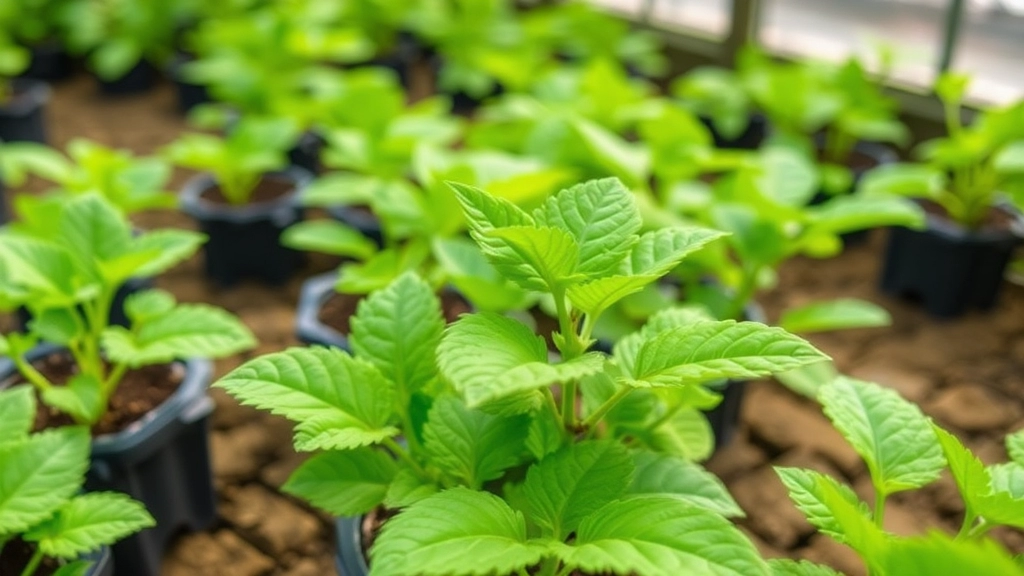
Alright, let’s dive into the sweet spot for growing Kalanchoe Tomentosa Nigra. Trust me, nailing these conditions is like hitting the jackpot for your plant.
First things first, these succulents are tough cookies. They’re not fussy, which is a massive win for us plant parents who might forget to water now and then (guilty as charged!). But here’s the kicker – they’ve got a few non-negotiables.
Climate Comfort Zone
These guys are sun-worshippers, no doubt about it. They thrive in warm, dry environments. Think desert vibes, but without the scorching heat. If you’re in a place that’s always humid, you might need to get creative.
Indoor vs Outdoor
Here’s a hot tip: Kalanchoe Tomentosa Nigra can rock both indoor and outdoor living. But if you’re in a spot that gets frosty, bring ’em inside when the temperature drops. They’re not fans of the cold, trust me on this one.
Space Requirements
Good news for small space dwellers – these plants don’t need a mansion to be happy. A cozy pot on a sunny windowsill? Perfect. Just make sure they’ve got room to spread their leaves a bit.
Key Points for Happy Plants:
- Warm and dry environment
- Protection from frost
- Decent air circulation
- Not too cramped
Remember, it’s all about balance. Too much of anything – water, sun, or even love (yes, that’s possible) – can throw these guys off their game. If you’re looking for more variety, check out the types of Kalanchoe Tomentosa available.
So, what’s the bottom line? Create a little desert oasis for your Kalanchoe Tomentosa Nigra, and you’ll be golden. It’s all about mimicking their natural habitat, minus the scorpions and sandstorms. For more detailed care instructions, you might want to explore how to care for Kalanchoe Tomentosa.
Soil Requirements
Alright, let’s dive into the soil requirements for Kalanchoe Tomentosa Nigra.
Soil can make or break your plant’s success. No pressure, right?
Here’s the scoop on what this fuzzy friend needs:
- Well-draining soil is non-negotiable
- These succulents hate wet feet
Mix it up:
- 2 parts regular potting soil
- 1 part perlite or coarse sand
Why? It’s all about that air flow, baby
Pro tip: Add a handful of small pebbles at the bottom of the pot
It’s like a VIP drainage system for your plant
pH matters too:
Aim for slightly acidic to neutral (6.0-7.0)
Nothing too fancy, just keep it balanced
Organic matter? Sure, but don’t go overboard
A bit of compost can give your plant a boost
Remember: Kalanchoe Tomentosa Nigra isn’t fussy
But get the soil right, and you’re halfway to plant parent glory
Bottom line: Well-draining, slightly acidic soil is your ticket to success with this fuzzy beauty
Watering Guidelines
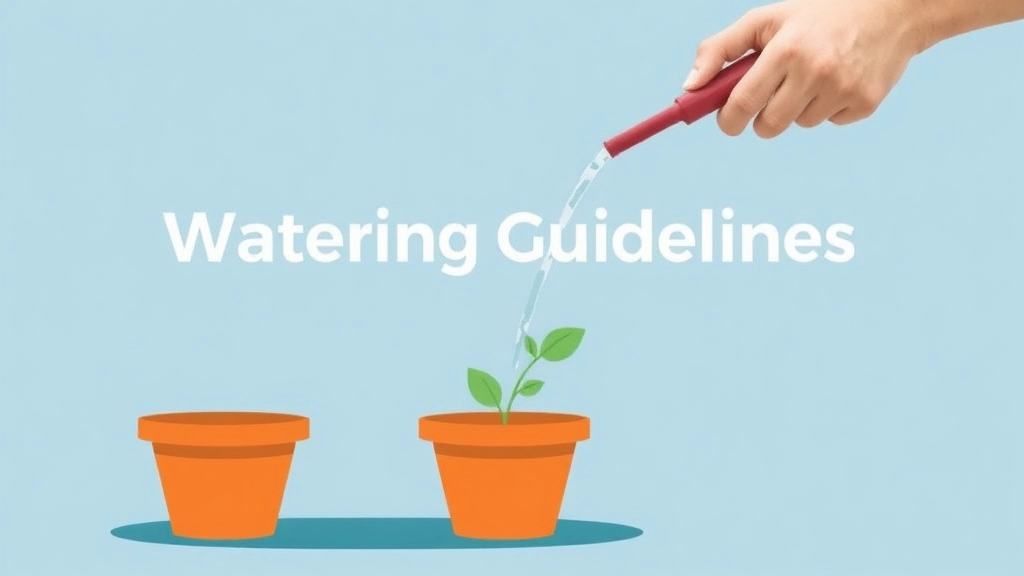
Listen up, plant pals! When it comes to watering your Kalanchoe Tomentosa Nigra, less is definitely more. These suckers are drought-tolerant champs, so you don’t need to go overboard.
Here’s the deal:
- Water sparingly: These plants store water in their leaves, so they can handle dry spells like a boss.
- Let the soil dry out: Before you even think about watering, make sure the top inch of soil is bone dry.
- Seasonal adjustments: Ease up on watering during winter when growth slows down.
But how often should you actually water? Well, it depends:
- Summer: Once every 7-10 days
- Winter: Once every 2-3 weeks
Pro tip: If you’re unsure, it’s always better to underwater than overwater. These guys can bounce back from drought, but root rot? That’s a whole other headache.
Watering method:
- Bottom watering: Place the pot in a tray of water for about 15 minutes. This encourages deep root growth.
- Top watering: If you must, water at the base of the plant, avoiding the leaves.
Remember, folks: Kalanchoe Tomentosa hates wet feet. Overwatering is the fastest way to kill these fuzzy friends. So, when in doubt, hold off on the H2O.
Got drainage? Make sure your pot has holes at the bottom. No one likes soggy socks, and your Kalanchoe feels the same about soggy roots.
Keep an eye out for these signs of overwatering:
- Yellowing leaves
- Soft, mushy stems
- Leaf drop
On the flip side, if you see wrinkled leaves, it might be time for a drink.
Bottom line: Watering your Kalanchoe Tomentosa Nigra isn’t rocket science, but it does require a bit of attention. Get it right, and you’ll have a happy, healthy fuzzy friend for years to come. If you’re interested in expanding your Kalanchoe collection, you might want to check out the colorful varieties of Kalanchoe Blossfeldiana as well.
Light and Temperature Preferences
Let’s chat about what Kalanchoe Tomentosa Nigra really likes when it comes to light and heat.
These fuzzy little succulents are sun-lovers, no doubt about it.
But here’s the thing – they’re not fans of scorching direct sunlight all day long.
Think of them as beach-goers who enjoy the sun but know when to seek shade.
Bright, indirect light is their sweet spot.
Got a south-facing window? Perfect. Just pop a sheer curtain up to filter that intense midday sun.
Now, temperature-wise, these guys are pretty chill (pun intended).
They’re happy in normal room temps, around 15-24°C (60-75°F).
But here’s a pro tip: they can handle a bit of cold, down to about 10°C (50°F).
Just don’t let them freeze, alright?
In summer, they might appreciate a holiday outdoors.
But remember, ease them into it. Sudden changes can stress them out.
And nobody wants a stressed succulent, trust me.
Got a spot that’s too shady? Your Kalanchoe might get leggy, reaching for light.
Too much direct sun? Watch for sunburn on those velvety leaves.
The key? Balance. Like most things in life, right?
So, keep an eye on your plant. It’ll tell you if it’s happy or not.
Kalanchoe Tomentosa Nigra thrives in bright, indirect light and moderate temperatures. Simple as that.
Fertilization Tips
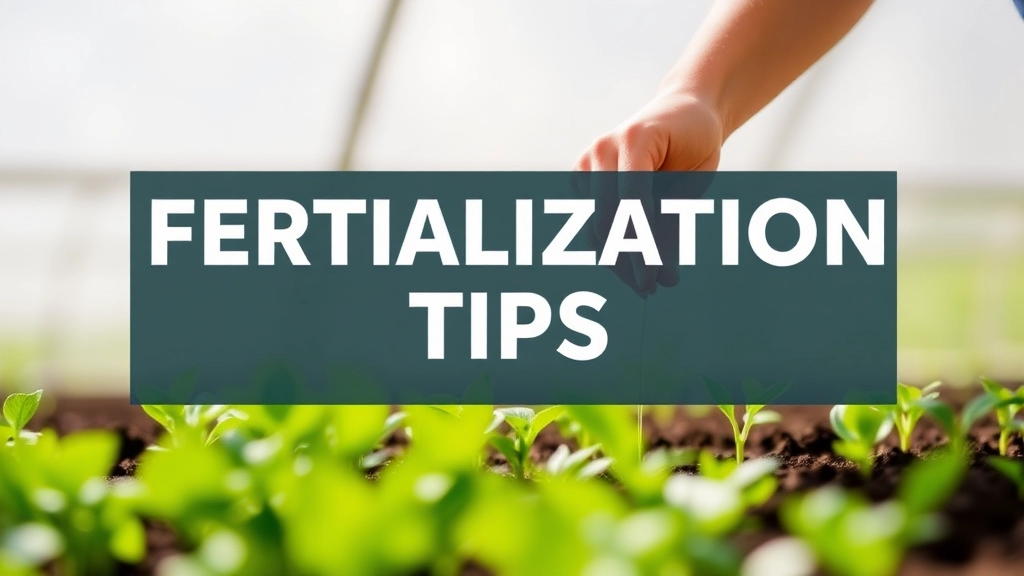
Let’s talk about feeding your Kalanchoe Tomentosa Nigra, or as I like to call it, the “Black Panda Plant.” Now, I’ve got to tell you, these succulents aren’t the hungriest plants out there, but they do appreciate a good meal now and then.
When to Fertilize
Here’s the deal: you don’t need to go overboard. I’ve found that feeding these guys about once a month during their growing season (spring and summer) is plenty. Trust me, I’ve made the mistake of over-fertilizing before, and it’s not pretty.
What to Use
Now, you might be wondering, “What’s the best grub for my Black Panda?” Well, I’ve tried a bunch of different stuff, and here’s what works:
- A balanced, water-soluble fertilizer (something like a 10-10-10 mix)
- Dilute it to about half the strength recommended on the package
- If you’re into organic options, a weak compost tea can do wonders
How to Apply
Alright, here’s where a lot of folks mess up. You don’t want to just dump the fertilizer on top of the soil. Instead:
- Water your plant first
- Apply the diluted fertilizer
- Water again lightly to help it soak in
This way, you’re less likely to burn those delicate roots.
Watch Out For…
Keep an eye on your plant after fertilizing. If you see any of these signs, you might be overdoing it:
- Yellowing leaves
- Soft, mushy growth
- Leaf drop
If you spot any of these, ease off on the feeding for a while.
Winter Care
Here’s a pro tip: during winter, your Black Panda Plant goes into a bit of a snooze. It’s not growing much, so it doesn’t need feeding. I usually stop fertilizing altogether from late autumn to early spring.
Remember, when it comes to fertilizing Kalanchoe Tomentosa varieties, less is often more. These tough little succulents don’t need much to thrive, so don’t stress too much about it. Just give them a little boost now and then, and they’ll be happy campers. If you’re interested in learning more about caring for these plants, check out our guide on how to care for Kalanchoe Tomentosa.
Pruning and Maintenance
Let’s chat about keeping your Kalanchoe Tomentosa Nigra looking sharp.
Pruning: Do You Really Need It?
Honestly? Not much.
These succulents are pretty low-maintenance.
But here’s the deal:
- Snip off any dead or yellowing leaves
- Trim leggy stems to keep it compact
- Remove spent flower stalks
Easy, right?
Maintenance: The Lazy Person’s Guide
I’m all about minimal effort, maximum results.
Here’s what you need to do:
- Dust the fuzzy leaves occasionally
- Check for pests every now and then
- Rotate the pot for even growth
That’s it. Seriously.
Pro Tip: Less is More
Don’t go overboard with pruning.
These plants are slow growers.
Overdoing it can stress them out.
When to Prune?
Spring or early summer is best.
That’s when they’re in growth mode.
But if you see a dead leaf in winter, just pluck it off.
Tools of the Trade
- Clean, sharp scissors
- Or your fingers for small jobs
No need for fancy gear.
Just keep it clean to avoid spreading diseases.
The Bottom Line
Pruning and maintenance for Kalanchoe Tomentosa Nigra is a breeze.
It’s perfect for busy folks or those who forget about their plants.
Just give it a quick once-over now and then, and you’re golden.
Common Pests and Diseases
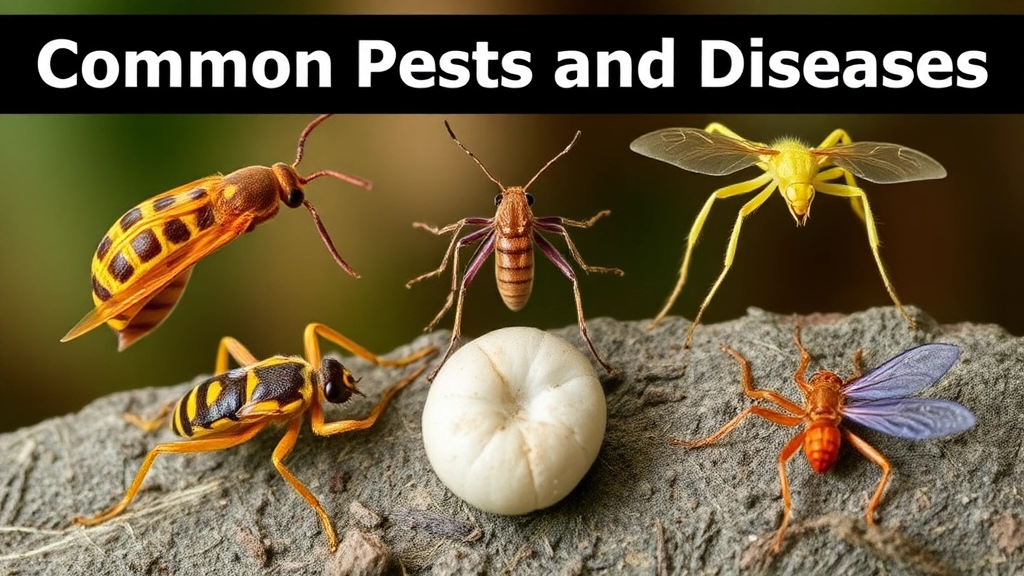
Hey there, plant pals! Let’s chat about the pesky problems that might bug your Kalanchoe Tomentosa Nigra. Trust me, I’ve been there, and it’s not fun when your fuzzy friend starts looking a bit under the weather.
Pests: The Uninvited Guests
First up, let’s talk about the creepy crawlies that might fancy your plant:
- Mealybugs: These little cotton-wool lookalikes love to suck the life out of your plant. Literally.
- Spider mites: Tiny but mighty, these guys can cause some serious damage if left unchecked.
- Aphids: Small, soft-bodied insects that multiply faster than you can say “Kalanchoe”.
Spotting the Troublemakers
Here’s how to know if you’ve got unwanted visitors:
- Sticky residue on leaves? Mealybugs might be partying on your plant.
- Tiny webs between leaves? Spider mites could be setting up shop.
- Curled or distorted leaves? Aphids might be having a feast.
Diseases: When Your Plant Feels Under the Weather
Now, let’s talk about the illnesses that might hit your Kalanchoe:
- Root rot: Too much water can lead to this nasty problem.
- Powdery mildew: Looks like someone dusted your plant with flour.
- Leaf spot: Brown or black spots on leaves that spread if not treated.
Signs Your Plant’s Not Feeling Great
- Yellowing leaves? Could be overwatering or root rot.
- White, powdery coating on leaves? Hello, powdery mildew!
- Spots on leaves that keep getting bigger? Leaf spot might be the culprit.
Keeping Your Kalanchoe Healthy
Prevention is better than cure, right? Here’s how to keep your plant happy:
- Don’t overwater. Seriously, these guys hate wet feet.
- Give them plenty of air circulation. They’re not fans of stuffy spaces.
- Keep an eye out for early signs of trouble. Catch problems early, and you’ll save yourself a headache later.
If you do spot trouble, don’t panic! A bit of neem oil or a gentle insecticidal soap can work wonders for pests. For diseases, improving air circulation and adjusting your watering habits can make a big difference.
Remember, your Kalanchoe Tomentosa Nigra is tough, but it needs your help to stay healthy. Keep an eye out for these common pests and diseases, and you’ll be well on your way to having a thriving, fuzzy friend for years to come.
Propagation Methods
Let’s talk about growing more of these fuzzy beauties, shall we?
Kalanchoe tomentosa nigra is a breeze to propagate. Trust me, I’ve done it loads.
Here’s the scoop:
Leaf Cuttings:
- Snip a healthy leaf
- Let it dry for a day or two
- Pop it in well-draining soil
- Water sparingly
- Watch it grow!
Stem Cuttings:
- Cut a stem about 4 inches long
- Remove lower leaves
- Let it callous over
- Plant in cactus mix
- Keep it moist, not soggy
Seeds:
- Bit trickier, but doable
- Sow on top of soil
- Mist gently
- Be patient, they’re slow starters
Division:
- For mature plants
- Gently separate offshoots
- Replant in fresh soil
Pro tip: Spring or summer’s your best bet for propagation.
Remember, these guys love a bit of neglect. Don’t fuss too much.
Got any propagation stories? I’d love to hear ’em!
Kalanchoe tomentosa nigra propagation is a fun way to expand your plant family. Give it a go!
Seasonal Care Adjustments
Alright, let’s chat about how to keep your Kalanchoe Tomentosa Nigra thriving all year round. This little beauty’s got some tricks up its sleeve when it comes to seasonal changes, and I’m here to spill the tea.
Winter Woes and How to Beat ‘Em
When the cold hits, your Kalanchoe’s gonna need some extra TLC. Here’s the deal:
- Cut back on watering – these guys hate wet feet in winter
- Move ’em closer to a sunny spot – they’re sun-chasers, after all
- Keep an eye out for drafts – cold air’s a no-go
Summer Lovin’
Come summer, your Kalanchoe’s ready to party. But remember:
- Water more often, but don’t go overboard
- Give ’em some shade during the hottest part of the day
- Watch out for sunburn – yeah, plants get it too!
Spring and Fall: The Goldilocks Seasons
These are your Kalanchoe’s favourite times. They’re not too hot, not too cold – just right. But don’t get lazy:
- Start ramping up (spring) or dialling down (fall) your watering
- Keep an eye on temperature changes – they can sneak up on you
Fertiliser Fun
Here’s a pro tip: feed your Kalanchoe during its growing season (spring and summer), but ease off in autumn and winter. It’s like putting a plant on a diet – they need less when they’re not growing as much.
Remember, your Kalanchoe Tomentosa Nigra’s not high maintenance, but it does appreciate a bit of seasonal TLC. Keep these tips in mind, and you’ll have a happy plant all year round. And hey, if you mess up, don’t sweat it. Plants are pretty forgiving – just like your mates after you’ve had one too many at the pub.
FAQs: Kalanchoe Tomentosa Nigra Care
Q: How often should I water my Kalanchoe Tomentosa Nigra?
A: Water sparingly, allowing the soil to dry out completely between waterings. In summer, this might mean once every 7-10 days, while in winter, you can reduce to once every 2-3 weeks. Always check the soil moisture before watering.
Q: Can Kalanchoe Tomentosa Nigra tolerate direct sunlight?
A: While these plants love bright light, direct sunlight can be too intense. Aim for bright, indirect light. If placing near a window, use a sheer curtain to filter strong midday sun.
Q: Is Kalanchoe Tomentosa Nigra toxic to pets?
A: Good news for pet owners! Kalanchoe Tomentosa Nigra is non-toxic to cats and dogs. However, it’s always best to keep plants out of reach of curious pets.
Q: How can I propagate my Kalanchoe Tomentosa Nigra?
A: The easiest method is through leaf or stem cuttings. Allow the cutting to callous over for a day or two, then plant in well-draining soil. Water sparingly until roots develop.
Q: Why are the leaves on my Kalanchoe Tomentosa Nigra turning yellow?
A: Yellowing leaves often indicate overwatering. Ensure your pot has good drainage and adjust your watering schedule. It could also be a sign of nutrient deficiency or too much direct sunlight.
Q: How often should I fertilize my Kalanchoe Tomentosa Nigra?
A: Fertilize monthly during the growing season (spring and summer) with a balanced, water-soluble fertilizer diluted to half strength. Avoid fertilizing in winter when the plant’s growth slows down.
Q: Can I grow Kalanchoe Tomentosa Nigra outdoors?
A: Yes, but only in warm climates (USDA zones 9-11). They can’t tolerate frost, so in colder areas, it’s best to grow them as indoor plants or move them indoors during winter.
Q: How do I prevent my Kalanchoe Tomentosa Nigra from getting leggy?
A: Legginess is often caused by insufficient light. Ensure your plant gets enough bright, indirect light. You can also prune leggy stems to encourage bushier growth.
References
-
Missouri Botanical Garden – Kalanchoe tomentosa Kalanchoe tomentosa

